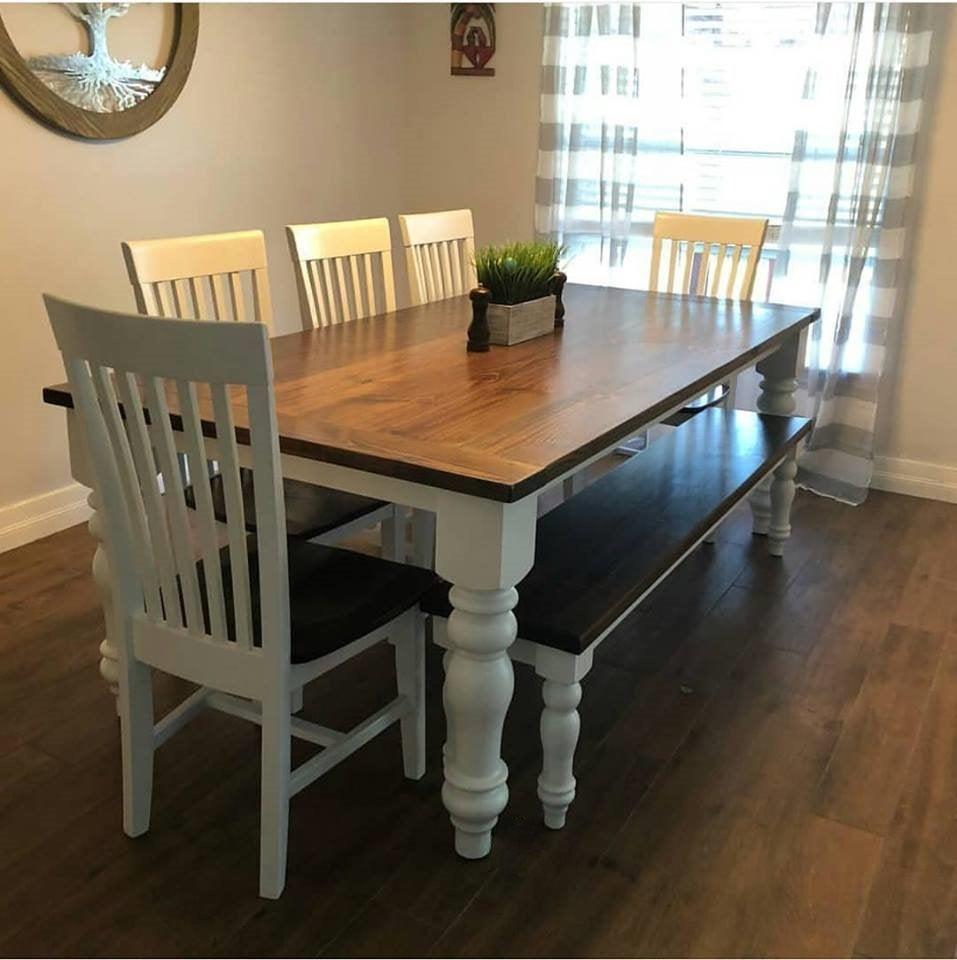Dining Room Table Legs That Incorporate Performance and Modern Layout
Dining Room Table Legs That Incorporate Performance and Modern Layout
Blog Article
A Detailed Appearance at Dining Table Leg Styles: Discovering the Suitable Suit
Picking the appropriate eating table leg style is critical for both aesthetic appeal and sensible functionality. For those with larger tables, trestle legs make sure tough support, whereas barrette legs present a mid-century contemporary ambiance with their minimal style. The x-shaped legs blend contemporary style with enhanced stability.
Traditional Four Legs
Amongst the various sorts of table leg designs, the standard four-leg design continues to be an ageless selection for several homes. This classic configuration offers a harmonious blend of functionality and appearances, making it a perennial fave. 4 legs supply well balanced assistance, making certain the table continues to be steady and qualified of birthing substantial weight. This is especially useful for households that regularly host big events or use their table for numerous objectives, such as work or crafting.
From an aesthetic viewpoint, the conventional four-leg layout can be quickly adapted to different interior designs. Whether crafted from wood, steel, or a mix of materials, these legs can be delicately sculpted, streamlined and minimalistic, or anything in between. Their versatility enables them to complement both rustic and modern settings effortlessly.
Furthermore, the uncomplicated framework of the four-leg design promotes convenience of movement and placement within a room. Unlike more complicated bases, this design reduces blockages, providing sufficient legroom for diners. In summary, the conventional four-leg eating table leg style marries withstanding sophistication with functional functionality, making it an astute choice for those seeking both form and function in their dining furnishings.
Stand Base
Usually commemorated for its elegant and space-efficient design, the pedestal base is a distinguished alternative to the traditional four-leg arrangement in dining table leg designs. This distinctive base generally includes a solitary central column supporting the table top, which can differ in form, from ornately sculpted timber to smooth, modern-day steel. Among the primary advantages of the pedestal base is its capability to take full advantage of legroom and seating versatility. Without corner legs, diners are managed higher liberty of activity, making it an ideal selection for round and oval tables that promote more intimate and comprehensive celebrations.
Furthermore, the stand base's main assistance can manage considerable weight, permitting using larger table tops, such as marble or thick hardwood. This strength paired with its aesthetic versatility makes the stand base a prominent selection in both conventional and modern indoor settings. It can seamlessly integrate with various layout motifs, from classic elegance to minimalist modernity. The central column itself offers a canvas for detailed designs and imaginative expressions, adding an aspect of aesthetic interest below the table. In recap, the stand base integrates performance with style, making it a refined and useful choice for diverse eating atmospheres.
Trestle Legs
Trestle legs offer a robust and timeless foundation for eating tables, identified by their straight cross-bracing and strong support beam of lights. Stemming from middle ages times, this design has actually developed yet preserved its crucial structure, making it a perennial favorite in both traditional and contemporary setups. The main trestle beam of light, typically sustained by two or even more upright messages, offers extraordinary security, permitting for larger table lengths without the requirement for extra legs.
A substantial advantage of trestle leg tables is the sufficient legroom they use. Unlike tables with 4 edge legs, the lack of blockages at the table's edges gives unobstructed space for chairs and restaurants, improving comfort and access. This makes trestle tables ideal for suiting larger celebrations, whether in a dining area or a reception hall.
The visual flexibility of trestle legs is noteworthy. Available in a range of materials such you could try here as timber, metal, and composite, they can be finished to enhance a large range of interior styles. From rustic farmhouse to sleek contemporary designs, trestle legs can be tailored to match private tastes. Their enduring charm and useful advantages make trestle legs a compelling selection for those looking for both style and usefulness in their table.
Hairpin Legs

The charm of hairpin legs lies in their simplicity and adaptability - dining room table legs. Offered in a series of materials, including steel and brass, they can be completed in many colors to enhance various interior styles. Whether coupled with a rustic wooden table top or a modern glass surface area, hairpin legs effortlessly blend capability with a touch of classic charm
Durability is one more notable feature of barrette legs. Despite their delicate look, these legs are engineered to bear considerable weight, guaranteeing the dining table stays steady and secure. Furthermore, they are fairly find more information easy to set up, making them a popular option for DIY fanatics and expert furniture manufacturers alike.
X-Shaped Legs

Constructed from products such as steel, wood, or a combination of both, X-shaped legs can be tailored to match numerous style choices. Steel legs commonly offer a sleek and industrial feeling, suitable for loft-style apartments and modern eating rooms. On the various other hand, wood X-shaped legs supply a warmer, more rustic allure, suitable for farmhouse or diverse interiors. The convenience in products allows property owners to customize their table to much better fit their total style scheme.
Furthermore, the engineering behind X-shaped legs ensures even weight distribution, decreasing the threat of wobbling and enhancing resilience. This makes them particularly fit for larger table that require added assistance. Basically, X-shaped legs blend useful design with modern-day looks, making them a timeless choice for varied dining settings.
Verdict
A thorough understanding of eating table leg styles reveals the distinct attributes and benefits of each layout. Trestle legs ensure durable assistance for larger tables, and hairpin legs introduce a mid-century modern-day visual.
Report this page